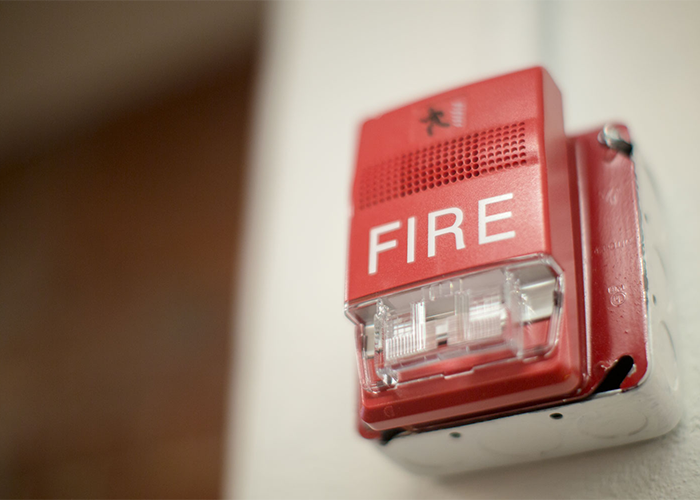The issue of false alarms is still very much a hot topic, as those of us who work within the industry are all too aware. In 2013, emergency services responded to over 400,000 cases of false alarms (source: FPA). The London Fire Brigade has taken steps to contain false alarms, as its Assistant Commissioner of Fire Safety, Neil Orbell, explains: “In 2014, the London Fire Brigade introduced a cost recovery fee for attending more than nine false alarm incidents in commercial premises in any 12 month rolling period. As of January 2016, £569,225 has been recovered. Attending false alarms places a significant drain on valuable public resources and reduces our capacity to respond to real emergency incidents.”
It is clear that reducing false alarms will contribute to optimising precious emergency services’ resources, as well as avoiding cost and inconvenience to businesses and the public. Their reduction will also foster greater confidence in the fire detection industry as a whole – no bad thing for all of us.
Designing and manufacturing reliable, effective and innovative fire detection devices is critical to reducing false alarms. However, there are further steps which the industry should consider. Firstly, no matter how high the quality of the detector, if it is poorly fitted or badly maintained, the probability of false alarms will be increased. The introduction of mandatory training certification across the European fire detection industry would be beneficial. Some test bodies and trade associations, such as the BAFE, LPCB and FIA, do offer third party certification schemes and training courses for the design, installation, commissioning and maintenance of fire systems, but this should be taken further and a compulsory standard established. An example of a sector which has successfully adopted this practice across Europe is that of refrigeration, stationary air conditioning and heat pumps. Technicians handling systems containing a fluorinated greenhouse gas (F gas) are required by law to comply with stringent training and certification, as are their employers.
Introducing similar measures within the fire detection industry would ensure that the rigorous design, testing and ongoing quality checks undertaken by reputable fire detection manufacturers are matched by superior fitting and maintenance.
Another positive step would be the introduction of a lifespan product standard for fire detection devices. Regular smoke and heat detector replacement would enhance the safety of both people and property – wear and tear over a number of years can affect the sensitivity of a device. It does concern me, and I am sure many others within the industry too, that there may be detectors in operation for 15 to 20 years, possibly without appropriate servicing. Many of these old detectors do perform very satisfactorily, but there is no guarantee that this will be the case.
In 2012, the Spanish Government declared that the life of fire detectors would be limited to 10 years, a move influenced by a revision of standard UNE23007-14: 2009, whilst German legislation DIN 147675, Section 11.5.3, calls for the replacement every 8 years of addressable detectors installed since 2006. I believe that comparable harmonised lifespan legislation should be introduced across Europe, providing peace of mind for installers, manufacturers and end users alike.
Counterfeit products remain a troubling issue for the industry. Although the reported cases of imitation devices are thankfully rare in Western Europe, the fire detection industry has observed an increasing trend in certain international markets. The potential dangers of using these inferior life-preserving devices should not be underestimated. The fitting of counterfeit detectors could contribute to false alarms and in the worst case, potentially present a threat to life. It also has a negative impact on the brand equity and the competitiveness of those manufacturers delivering safe, rigorously tested and innovative fire detection systems.
Bringing a fire detector to the market is a lengthy and costly exercise, involving different phases of software and hardware development, validation testing, and approvals before manufacturing and selling can get underway. The fire detector itself is a highly complex and sensitive device, designed to fit in perfectly into an overall fire system.
Continuing to supply a device to the market is also a complex and costly exercise requiring ongoing approvals, end of line testing and regular conformance audits, all of which ensure that there are no deviations in performance relative to the approved standards.
It is not acceptable that a few, less reputable companies, choose to circumvent these processes by copying other manufacturers’ products. Imitation devices may to the untrained eye look identical to the original, but their use carries the risk of non-activation, and presents the danger of compromising an overall fire detection system due to non-compatibility.
To tackle this issue, trade associations and regulatory bodies globally must cooperate and adopt a common approach to safeguard markets and industry against counterfeiting.
Genuine and reputable fire detection manufacturers are constantly striving to increase life safety by improving their products and raising their standards. The benefits of this commitment would be enhanced if the industry were able to guarantee a consistent standard of installation and service, supported by clear guidelines on product life, and backed up with a robust approach to tackling counterfeit goods in those markets where it is an issue.
For more information go to www.apollo-fire.co.uk


